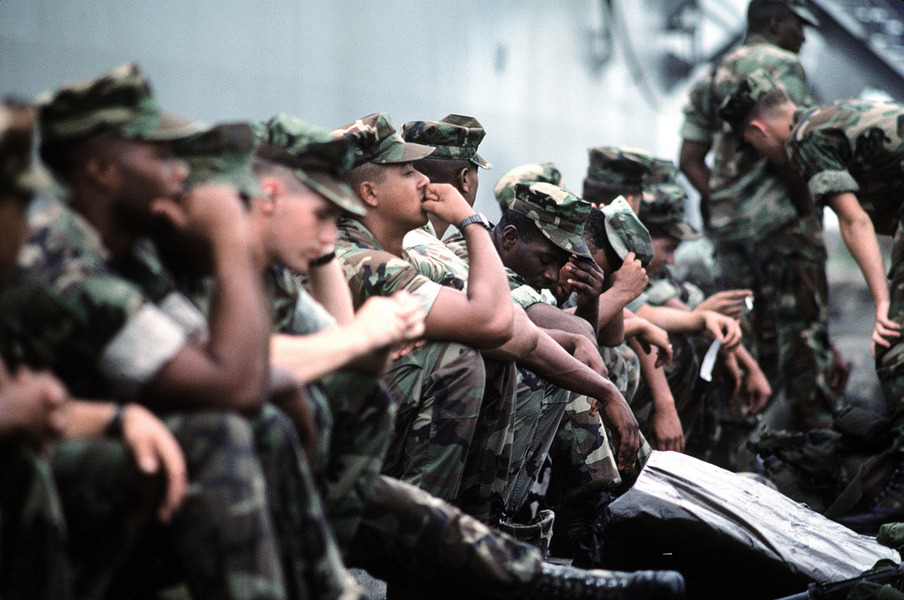Combat: Policy, Law, and Reality in the Fight Against ISIL
President Obama established U.S. policy towards the Islamic State of Iraq and the Levant (ISIL) in a September 2014 speech. In his address, Obama committed to not having members of the U.S. armed forces undertake combat missions nor fight on foreign soil against ISIL: “As I have said before, these American forces will not have a combat mission – we will not get dragged into another ground war in Iraq.”
Published by The Lawfare Institute
in Cooperation With

President Obama established U.S. policy towards the Islamic State of Iraq and the Levant (ISIL) in a September 2014 speech. In his address, Obama committed to not having members of the U.S. armed forces undertake combat missions nor fight on foreign soil against ISIL: “As I have said before, these American forces will not have a combat mission – we will not get dragged into another ground war in Iraq.”
Despite this public proclamation, Operator Joshua Wheeler, from the U.S. Army’s 1st Special Forces Operational Detachment Delta, U.S. Marine Louis Cardin of 2nd Battalion, 6th Marine Regiment, and U.S. Navy SEAL Charles Keating IV have been killed by ISIL. The circumstances of these American’s deaths would appear to most to be “combat” in any ordinary sense of the term. And yet the White House continues to insist that, though these losses are tragic, members of the U.S. armed forces in Iraq and Syria are not undertaking a combat mission.
The question of whether troops are engaged in “combat” in a technical sense is not merely about the disconnect between rhetoric and ground reality. It also arises from the incongruence of current policy, which disavows a combat mission, with the legal authorities on which it relies, which are predicated on combat.
Under the War Powers Resolution, President Obama is empowered to define ISIL policy. But he can only introduce members of the U.S. armed forces into hostilities pursuant to a declaration of war, specific statutory authorization, or a national emergency created by an attack—or an imminent attack—upon the U.S., its territories or possessions, or its armed forces. To meet this requirement, President Obama has utilized a combination of authorities within Article II of the Constitution, Public Law 107-40 signed on September 18, 2001 authorizing the use of members of the U.S. armed forces against those responsible for the attacks of September 11, 2001, and Public Law 107-243 signed on October 16, 2002, "Authorization for Use of Military Force Against Iraq.” So while the President may insist that members of the U.S. armed forces in Iraq and Syria are not undertaking a combat mission, his utilization of these combined authorities as part of his ISIL policy demonstrates an acceptance that these activities do involve hostilities and the use of military force
Beyond the laws that establish or restrict President Obama’s authority to introduce members of the U.S. armed forces into hostilities are others that underpin activities undertaken by the U.S. Department of Defense. Section (13A) of 10 U.S. Code § 101 broadly defines a contingency operation as a military operation designated by the Secretary of Defense in which members of the U.S. armed forces are or may become involved in military actions, operations, or hostilities against an enemy of the United States or against an opposing military force. If members of the U.S. armed forces are serving in a combat zone, as defined by the President via an executive order, their gross income can be tax excluded. Members of the U.S. armed forces can also receive hostile fire pay based upon a variety of factors.
So how might one accurately capture the Administration’s position on current activities being undertaken in Iraq and Syria? Members of the U.S. armed forces, introduced into a combat zone—where hostilities are taking place and they may be exposed to hostile fire—as part of a contingency operation, undertaking a mission to provide precision airstrikes, intelligence and advise-and assist support to the Iraqis, that occasionally results in the death of members of the U.S. armed forces during direct ground combat with ISIL.
While this description might appropriately weave together President Obama’s policy and various existing laws, on the ground in Iraq and Syria incoming fire from ISIL does not discriminate. And the incongruence will persist until the President’s stated policy reflects the reality of the activities that are occurring and Congress passes an ISIL-specific Authorization for Use of Military Force.
Policymakers and lawmakers in Washington D.C. may view this situation as incongruous, but they seem sufficiently comfortable with the ambiguities to not act to correct them. The American people, however, will increasingly view the situation as deception. To honor the members of the U.S armed forces who are in harm’s way, and ensure transparency in government, President Obama and Congress need to better inform the American people regarding U.S. activities in Iraq and Syria so as to ensure that truth is not the first casualty of war.




.jpg?sfvrsn=1ec79bb0_5)
